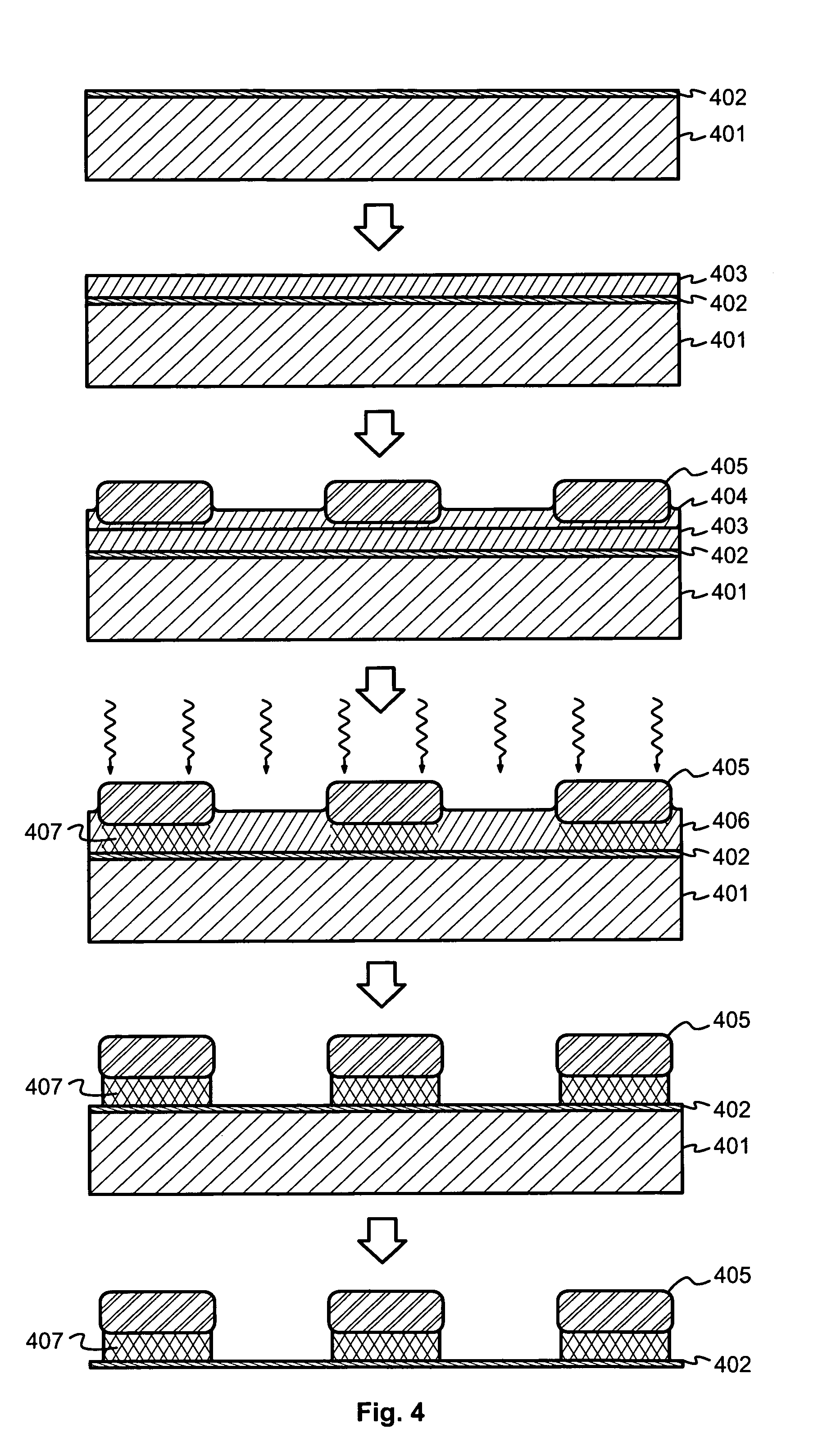Window membrane for detector and analyser devices, and a method for manufacturing a window membrane
a detector and analyser technology, applied in the field of reinforced membranes, can solve the problems of disturbingly large collimating effect of reinforcement grid, unfavorable mechanical characteristics, and inability to adjust to temperature changes, etc., and achieves low unit cost, good yield, and advantageous mechanical characteristics.
- Summary
- Abstract
- Description
- Claims
- Application Information
AI Technical Summary
Benefits of technology
Problems solved by technology
Method used
Image
Examples
Embodiment Construction
[0025]FIG. 2 illustrates schematically a composite membrane structure according to a principal embodiment of the invention. The basic structural parts of the membrane are a continuous window film 201 and a reinforcement mesh 202. Since FIG. 2 is a cross-section drawing, only some portions of the reinforcement mesh are visible in the form of hatched rectangles. The reinforcement mesh may continue as extended solid portions 203 towards the edges of the window to facilitate more reliable fitting to a frame (not shown in FIG. 2). Between the reinforcement mesh 202 and the window film 201 there is a layer of solid material 204, which acts like a glue and attaches the reinforcement mesh 202 to the surface of the window film 201.
[0026]FIG. 3 illustrates an excerpt of a manufacturing process, in which at some previous manufacturing steps 301 and 302 there are formed a window film and a reinforcement mesh respectively. At some later step 303 in the process, the window film and the reinforcem...
PUM
| Property | Measurement | Unit |
|---|---|---|
| thickness | aaaaa | aaaaa |
| thickness | aaaaa | aaaaa |
| thickness | aaaaa | aaaaa |
Abstract
Description
Claims
Application Information
 Login to View More
Login to View More - R&D
- Intellectual Property
- Life Sciences
- Materials
- Tech Scout
- Unparalleled Data Quality
- Higher Quality Content
- 60% Fewer Hallucinations
Browse by: Latest US Patents, China's latest patents, Technical Efficacy Thesaurus, Application Domain, Technology Topic, Popular Technical Reports.
© 2025 PatSnap. All rights reserved.Legal|Privacy policy|Modern Slavery Act Transparency Statement|Sitemap|About US| Contact US: help@patsnap.com



